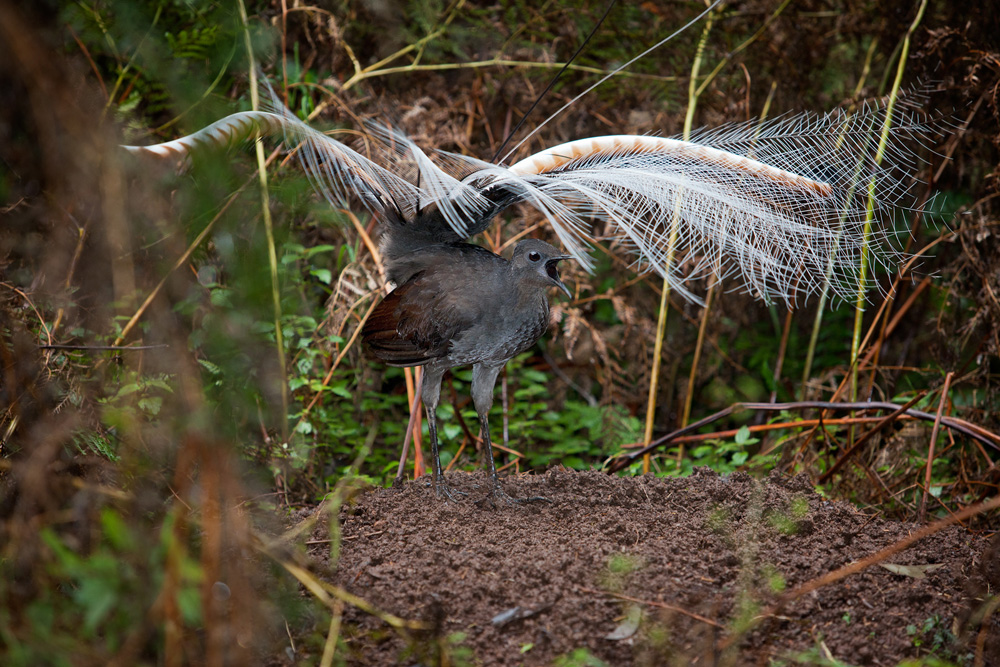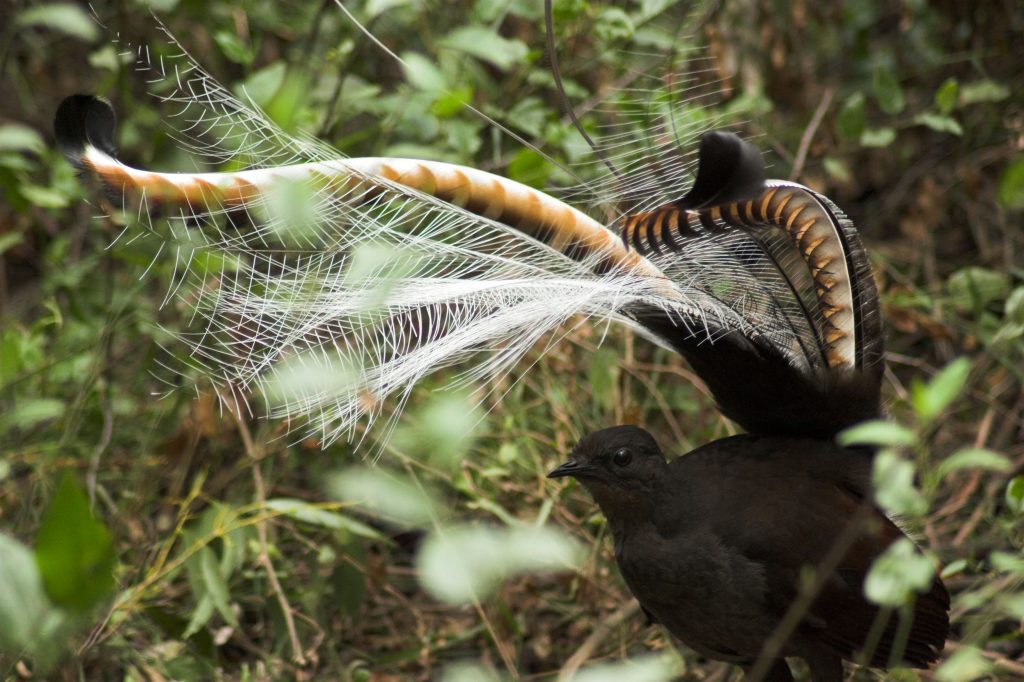The superb lyrebird has a spectacular tail of fanned feathers, when spread out in display, looks like a lyre, which is a musical instrument of ancient Greece.
The male superb lyrebird is 80-100 cm long, including his 55-cm-long tail. He is dark brown on the upper part of his body and lighter brown below, with red-brown markings on his throat. His tail feathers are dark brown above and silver-grey below.
Females of the species are smaller than the males, with similar colouring but without the lyre-shaped tail. The females’ tail feathers are broadly webbed with reddish markings. Young male superb lyrebirds do not grow their lyre tails until they are three or four years old. Until this time, they usually group together and are known as ‘plain-tails’.
The superb lyrebird has an elaborate courtship ritual, centred around a display mound. Built by the male bird, this display mound is made of scratched earth and measures up to 90 cm wide by 15 cm high. Each lyrebird territory may include 10 to 15 display mounds, which the displaying male may visit in turn. When courting, the male bird stands on a mound, spreading its tail over its head and singing a loud, clear song for as long as 20 minutes.
The display period is from May to August, with breeding occurring mainly in June and July. Females are attracted to the mound by the male’s display and song. Male birds will mate with several females. The male bird takes no part in building them or incubating and feeding the young.
The female builds a dome-shaped nest of sticks, which can be on the ground, on rocks, within tree stumps, or in tree ferns and caves. Usually, only one egg is laid, which hatches in around six weeks. The young lyrebird remains in the nest for six to ten weeks.


![]()
